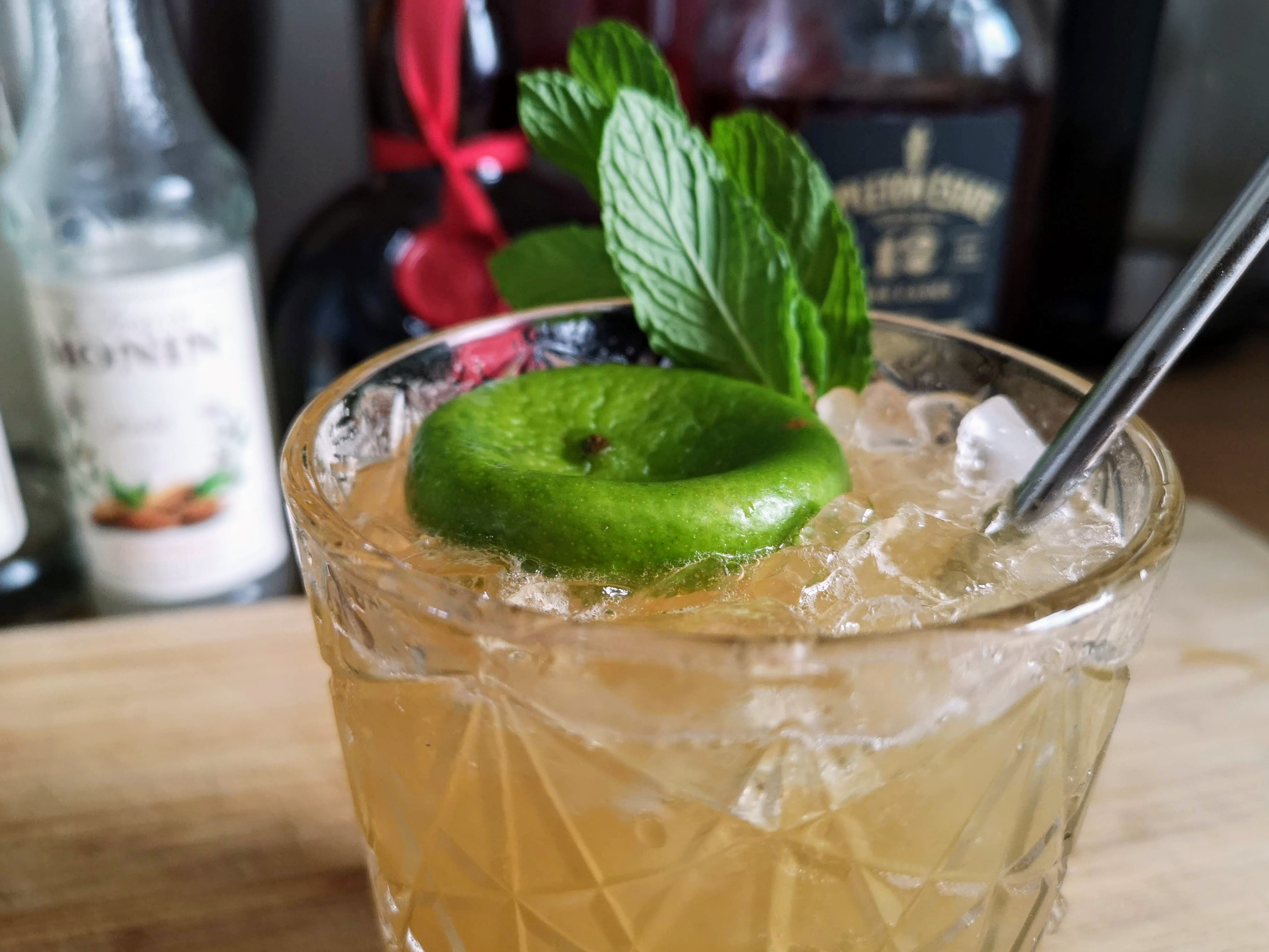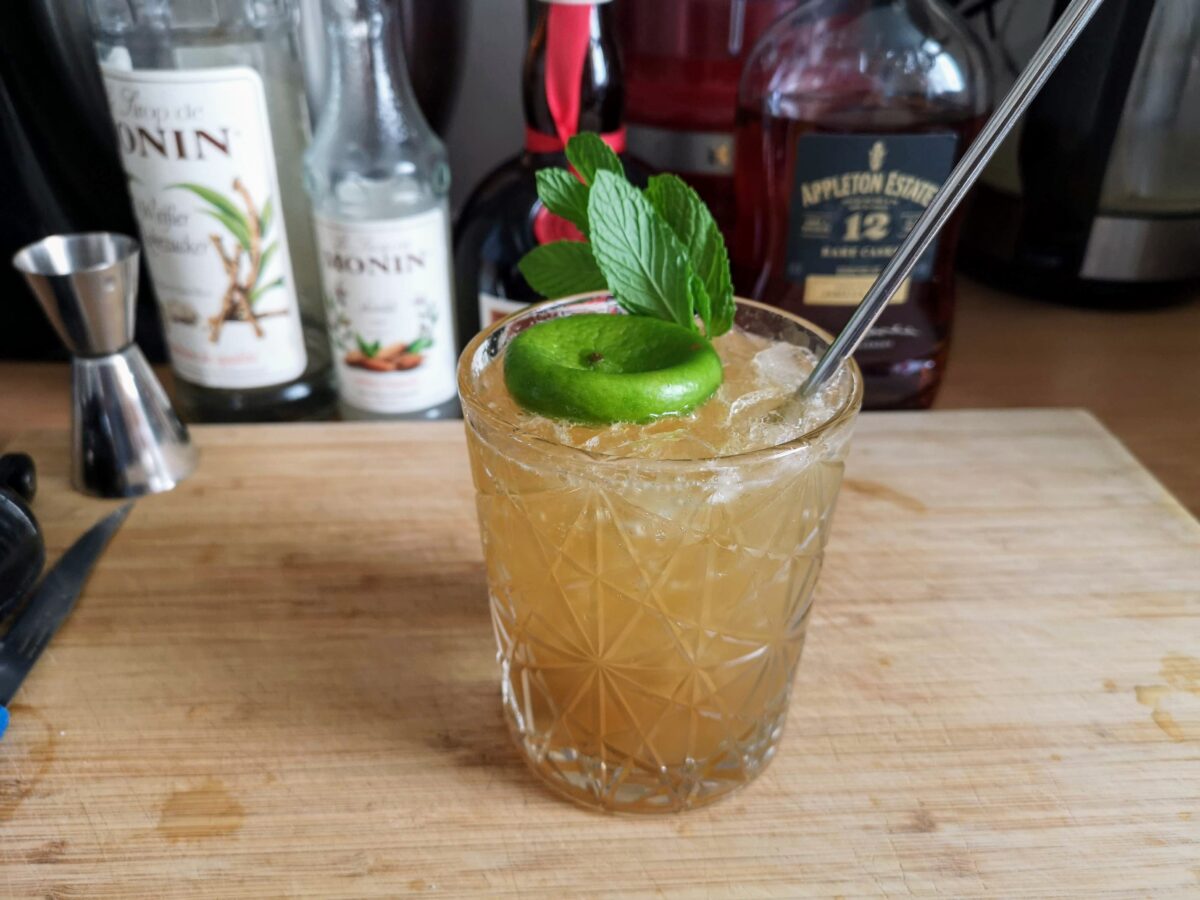
A classic mai tai cocktail is never a bad idea. The “tiki” drink is a tropical classic that was invented by the legendary Victor Bergeron, also known as the Trader Vic.
This mix of dark rum, orgeat syrup (an almond-based sugary syrup), lime, and orange liqueur has a long history with me. This is the drink that my boss and I would split every night we worked next to each other behind the bar at Victoria Bar in Berlin. As things wound down and people started trickling out, Beate (my boss and a legend in the bartending game) would shake up a double mai tai in a pint glass and put two straws in it. As we filled bottle drawers and dried glasses, we’d share sips between end-of-night routines. It’s a nice memory, tied to a great drink we both really dig.
The recipe below is more akin to the recipe at Victoria (a single, not a double) that comes by way of the classic Trader Vic’s recipe. That iconic recipe is so dialed, you never need to change it — so our recipe sticks very close to the original.
Let’s get shaking!
Trader Vic’s Mai Tai

Ingredients:
- 2-oz. dark Jamaican rum (plus an extra splash)
- 1-oz. fresh lime juice
- 0.5-oz. orange liqueur
- 0.5-oz. orgeat syrup
- 0.25-oz. sugar cane simple syrup (or rock candy syrup)
- Crushed ice
- Used lime half
- Fresh mint sprig
The original recipe calls for 17-year-old J. Wray & Nephew Jamaican rum. The closest you can get to that brand today is Appleton Estate, which is part of the J. Wray & Nephew family. So I’m using Appleton Estate 12 Year Rare Cask. You can snag a bottle here for about $40.
When it comes to the orange liqueur, you should be using DeKuyper Orange Curaçao. There are differences between Curaçao and triple sec and Grand Marinier. The main difference is the type of base spirit and orange peel used in the liqueur. Orange Curaçao (the real stuff, not that neon blue bullshit) is made with a wine and sugar cane spirit base and Lahara oranges, specifically. It has an orange hue (triple sec/Cointreau is usually clear) and feels like a brandied orange with a solid bitterness. Since classic Dutch orange Curaçao leans more towards brandy/bitter orange, I’m using the Grand Marinier that I have on my shelf, because it has a brandy wine base and is an orange liqueur (and I don’t need a third orange liqueur bottle on my shelf right now).
If you want, you can grab a bottle of DeKuyper Orange Curaçao for about $10.
What You’ll Need:
- Large or double rocks glass
- Cocktail shaker
- Hand juicer
- Paring knife
- Jigger
- Straw

Method:
- Add the rum, lime, orange liqueur, orgeat, and simple syrup to a cocktail shaker.
- Add about one cup of crushed ice.
- Top the shaker and give it an orbital, easy-going ten-second shake (you want to add air to just emulsify the ingredients and not over dilute).
- Pour the drink directly into the glass with the ice. Top up with fresh ice to just below the rim if needed.
- Use the spent lime half and place it peel side up, creating a “small island.”
- Slap the fresh mint on the back of your hand to release the oils a bit and place it over the lime island, creating a “palm tree.”
- Add a straw and serve.
Bottom Line:

I can’t overstate how freakin’ delicious this drink is. Yes, I have a history with it and it takes me back to that special friendship. But this really is just this bright, deeply flavored, and rummy drink that bursts with verve and joy.
The crushed ice starts to congeal a bit, which keeps the drink super cold for a really long time without over diluting the drink. That allows the rum, almond, and citrus to really shine. It’s also potent — expect to get a little tipsy after you make your second round.
It helps that this really is pretty easy to make. You just need to shake a bit and pour. It’s not overly technical but feels really high-level. That’s the dream for any home bartender.

